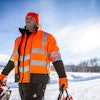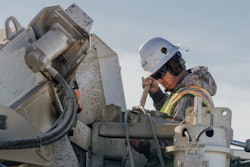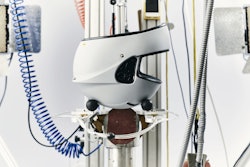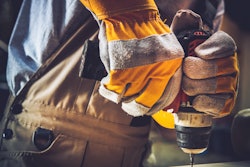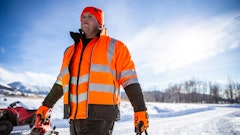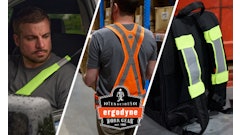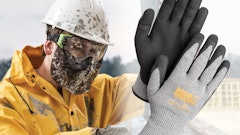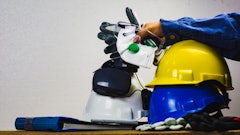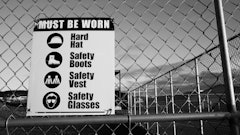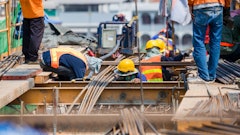
With construction sites having many noisy operations and machinery, workers are at risk of unsafe levels of noise exposure every day. Exposure to loud noises, no matter how frequently, can lead to irreversible hearing damage and hearing loss. And unfortunately, these everyday noises can contribute to workplace accidents due to it being difficult to hear your own team and important warning signals.
With so many sources of loud noises on construction sites, it’s important to understand why hearing protection headphones are an essential form of personal protective equipment (PPE) and why construction site managers need to put safety measures in place to prevent irreversible hearing loss. While there are still challenges of ensuring appropriate hearing protection while on a jobsite, managers need to make sure that protection is in place to ensure workers are maintaining proper communication during a job.
Below are best practices construction site managers should consider when deciding proper hearing protection for their workers and ensuring employees are impeding hearing loss for as long as possible.
Know the Challenges
It’s a challenge in and of itself to make hearing protection a priority on the jobsite, but making sure to maintain proper communication while simultaneously ensuring workers are following proper hearing safety guidelines can pose several obstacles. Construction workers may be hesitant at first to add another layer of protection to their ensemble.
Proper education can help convince employees that protective headphones are just as important as any other safety gear. Include this education during the onboarding process so employees know the expectations from the start.
Another challenge to consider is the functionality of the hearing protection headphone. Maintaining proper communication on a worksite is vital. Between loud equipment and other distracting noises (i.e., cars driving by, sirens, etc.), workers also need to be able to hear important warning signals or general instructions from colleagues or managers. Professionals have to either remove their hearing protection equipment every time they need to communicate with others or risk not wearing hearing protective equipment at all.
The issue with constantly taking hearing protective gear on and off is that workers don’t know when a warning signal or alarm could go off. That’s why it’s advised to avoid noise-canceling headphones and instead find an option that isolates these outside noises, allowing workers to still hear what’s going on around them but at a safe hearing level.
Consider Different Technologies
When it comes to selecting proper hearing protection, there’s a long list of technology features to consider that will foster overall jobsite communication. One of the most important features, however, is choosing a hearing protection headphone that features situational awareness.
Known in the industry by a few different names, this type of technology features omni-directional microphones that allow users to safely listen to the world around them, such as colleagues, warning signals, approaching vehicles or sounds in machines and processes. This type of technology offers precise impulse filtration that reduces harmful sounds while still giving users complete awareness on a jobsite.
 While safety should be the No. 1 priority when selecting hearing protection, the types of integrated technologies available should also be a consideration.Haven Technologies / ISOtunes
While safety should be the No. 1 priority when selecting hearing protection, the types of integrated technologies available should also be a consideration.Haven Technologies / ISOtunes
Leveraging this type of technology is ideal when it comes to fostering proper communication on a construction site. With no need to ever remove your hearing safety equipment, workers will be protected from unsafe levels of noise throughout the day without ever missing a warning signal or other signs again.
Research the Features You Need
Once you know what special technology you want and need, make sure the hearing protection you’re choosing for employees includes the following features:
- Noise Reduction Rating (NRR): Hearing protection headphones are rated with an NRR, which is a unit of measurement that determines the effectiveness of hearing protection devices to decrease sound exposure within a working environment. When wearing hearing protection, workers’ level of exposure to noise is based on the NRR rating of the device being used. Hearing protectors are classified by their potential to reduce noise in decibels (dB) and must be tested to the ANSI standard in order to be OSHA compliant.
- Compliant with OSHA Standards: OSHA has outlined specific standards for noise in construction that apply on the national level. These standards are outlined in 29 CFR 1926 - specifically Subpart D and Subpart E. OSHA requires that personal hearing protection should be provided to all applicable workers and that noise reduction controls should be implemented at the design and building phases.
- Functionality: While safety should be the No. 1 priority when selecting hearing protection headphones, the types of technologies that are available to integrate while mitigating hearing damage should also be a consideration. Functional features to consider include: level-dependent technology; Bluetooth technology (for music and phone calls); background noise-isolating microphone; water, sweat and dust resistance; and style options (e.g., in-ear wireless, over-ear wireless, etc.)
Hearing protection has a long-lasting impact on workers and should be held to the same standard as any other safety feature on a construction site. By educating yourself on the challenges, considering new technologies and researching specific features, construction companies can ensure that the protective headphone they choose not only meets the needs of their jobsite, but the needs of their employees.
Pete Murphy is president of Haven Technologies Inc., maker of ISOtunes branded products.
